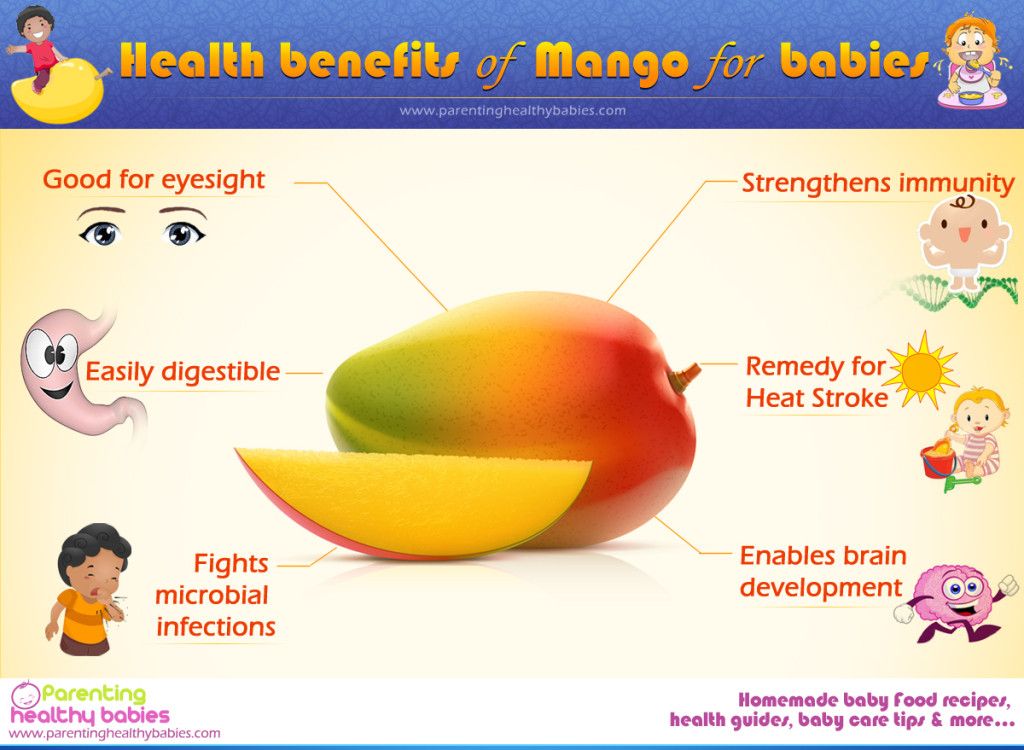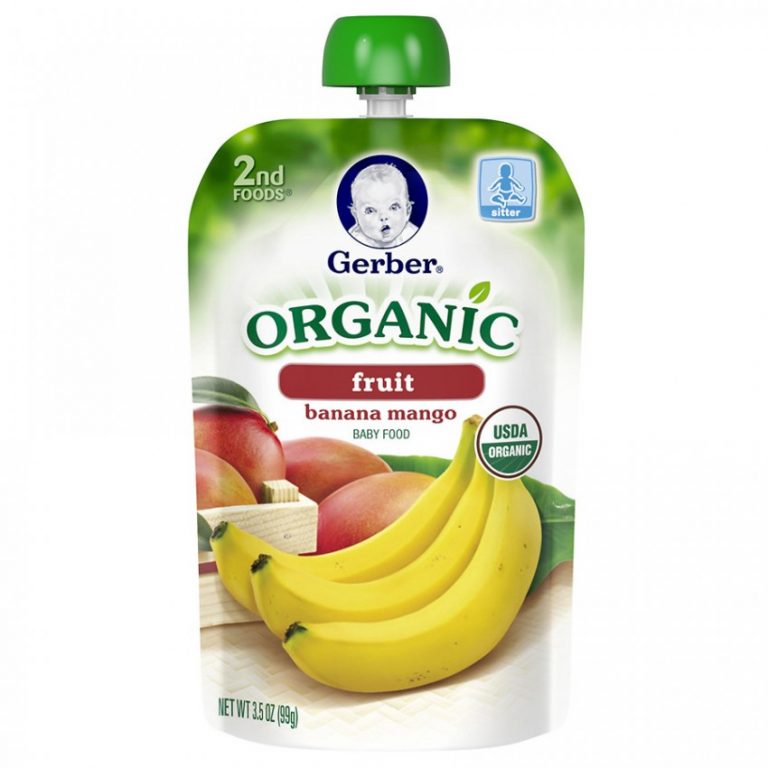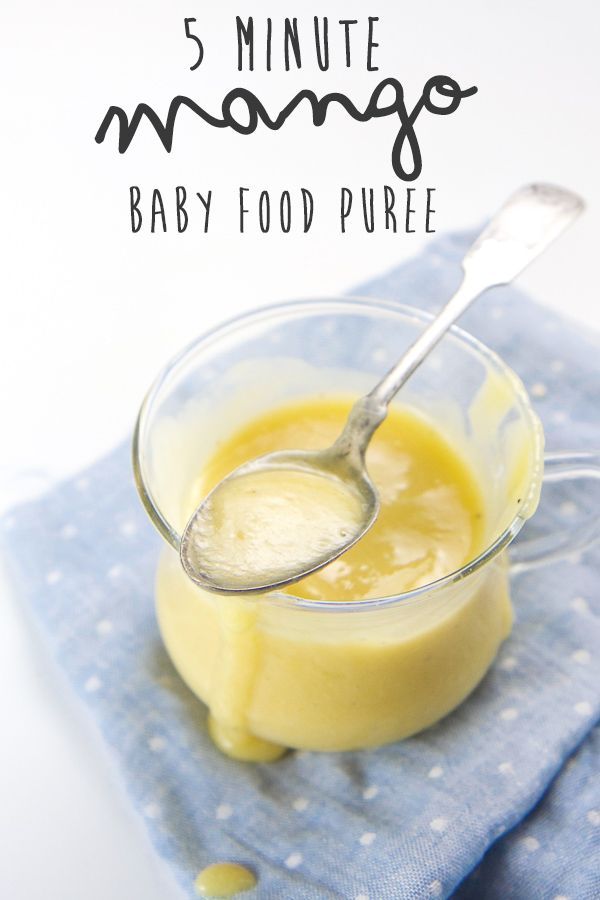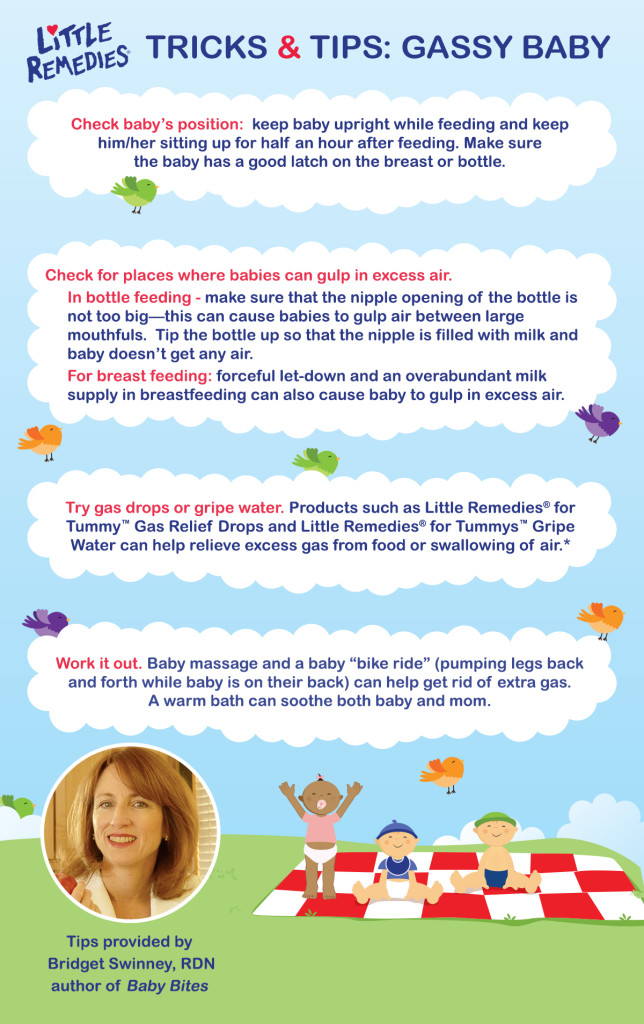Mango baby food allergy
Baby Care Tip #56 – Be careful while feeding mango to your baby for the first time
The season of mango are here and many mothers who in the process to wean their babies are already contemplating to feed mangoes to their kiddos? But the king of fruits has a bad rep for generating a little heat in the body after consumption. Being a tropical fruit most mothers are concerned if they should give their babies mangoes or not during the weaning stage. Know if you should feed raw vegetables and fruits to your child during weaning.
Even I had the same concern when I wanted to feed my babies mangoes during weaning. A quick discussion with my paediatrician made me realise that feeding mangoes to babies aren t harmful. In fact, my paediatrician said that mashing a ripe juicy mango to make a good consistency that the baby can eat is all that I need to do. However, if you are too concerned, steaming the mangoes can help. Steaming in a low flame, cooling and mashing the mangoes make a good dish for your baby. Here are other weaning foods for your baby that you can try.
However, while feeding mangoes here are a few things that you should keep in mind:
Never give mangoes as the first weaning food to your child as they are heavy to digest and might not be compatible with your child s immature digestive system. Instead, a ripe banana is thought to be a better first food. Here are 11 food mistakes you should avoid while weaning your baby.
Try mangoes only after your child has turned eight months old as the digestion of your child keeps getting better with time. Never give it before six months of age.
If you are trying mangoes for the first time don t go overboard, even if your child loves the taste and demands more. Like every other food, follow the thumb rule, try with few pieces first, then wait and watch how your child is taking in the fruit. Keep a vigilant watch if your child shows any signs of allergies like rashes, bumps or indigestion like loose motions, diarrhoea. Read to know can one be allergic to mangoes?
Read to know can one be allergic to mangoes?
Allergies due to mangoes are uncommon but not unheard of. So, keep a watch on your child when you give mangoes. Mango allergies can manifest in two ways immediate hypersensitivity and delayed hypersensitivity. In immediate hypersensitivity, the reactions start soon after one consumes mangoes and is usually attributed to indigestion of mangoes. The other symptoms are wheezing with difficulty in breathing, redness of the skin or erythema, rashes with itching or urticaria, swelling under the skin of the face, throat or abdomen or angioedema. In addition to this, some might also develop respiratory troubles and itching of eyes and mouth, swelling of eyelids, profuse sweating and chest tightness. However, these symptoms are observed more in adults than in kids. Delayed hypersensitivity can manifest as contact dermatitis, periorbital oedema and eczematous rash and blister formation around lips. Delayed hypersensitivity reaction to mango can occur either by direct contact with the mango or even the tree itself.
The good news is allergic reactions to mango have also been observed in individuals residing in geographical areas where cultivation of the fruit does not occur. Nearly half of the world s mangoes are cultivated in India alone and it is the country s national fruit. So, chances are high that your child might not get an allergy or infection but it doesn t harm to be a vigilant parent and keep a watch.
Reference:
Sareen, R., & Shah, A. (2011). Hypersensitivity manifestations to the fruit mango. Asia Pacific Allergy, 1(1), 43 49. http://doi.org/10.5415/apallergy.2011.1.1.43
Image source: Shutterstock
Total Wellness is now just a click away.
Follow us on
Mango allergy: Symptoms, causes, and treatment
While rare, mango allergy can cause mouth itching, hives, vomiting, or breathing issues shortly after exposure. A person may also experience a delayed reaction, such as a rash around the mouth or eye swelling.
A person may also experience a delayed reaction, such as a rash around the mouth or eye swelling.
People with a mango allergy may develop symptoms after they have been in contact with mango peels or a mango tree.
Doctors can diagnose mango allergies with a thorough medical history and physical examination. Testing can confirm the diagnosis.
This article explains the symptoms, causes, and treatment of mango allergies.
People with a mango allergy may experience symptoms such as rash and itching when exposed to mango. In some severe cases, mango allergy may cause anaphylaxis, a medical condition that requires immediate treatment.
However, in most cases, mango peel is the part of the fruit that triggers an allergic reaction. Some people may be able to eat the flesh of a mango with the peel removed without experiencing a reaction.
The symptoms of mango allergy can fall into two categories.
An immediate-type allergy — also called immunoglobulin-mediated (IgE-mediated) allergy — may appear within 1 hour of exposure to the mango. This reaction is more likely to occur with exposure to mango pulp specifically and causes symptoms such as hives, vomiting, or breathing difficulty.
This reaction is more likely to occur with exposure to mango pulp specifically and causes symptoms such as hives, vomiting, or breathing difficulty.
A delayed-type reaction, which can occur hours or days after exposure, is more common after exposure to mango peel. The delayed type of mango allergy causes an itchy rash around the mouth or eyes.
Learn more about food allergies.
We explore the symptoms of the two types of mango allergy in further detail below.
Immediate-type allergy
Symptoms usually begin within 1 hour of eating mango and include:
- swelling
- hives
- flushed skin
- wheezing
Immediate-type allergy can be a classic-type allergy to mango with a risk of anaphylaxis or oral allergy syndrome, which occurs due to cross-reactivity between mango and pollen. This is also known as pollen food allergy syndrome.
Learn more about allergic rashes.
In extremely rare cases, a person with mango allergy may experience an anaphylactic reaction. Anaphylaxis is life threatening, and a person should seek medical attention immediately.
Anaphylaxis is life threatening, and a person should seek medical attention immediately.
Symptoms of anaphylaxis may include:
- hives
- diarrhea
- facial edema
- severe stomach pain
Delayed-type allergy
With a delayed-type allergy reaction, having skin contact with certain proteins in mango can cause an itchy rash to appear hours to days after exposure.
According to a 2021 review, instead of looking like hives, the skin may appear:
- flushed
- dry and flaky
- blistered
- irritated
This type of reaction is similar to allergic contact dermatitis.
A 2022 report states that a 12-year-old developed a rash around their mouth, blisters, and flaky skin after eating mango slices.
There is no specific research into the presentation of mango allergy in babies. However, food allergies may be more common in babies.
Children have more sensitive skin and are more likely to experience dermatitis after touching an allergen.
If a person notices a rash around the mouth of a child hours to days after eating mango, they should take the infant for evaluation by a pediatrician or allergist. Delayed-type allergies with rash are not immediately life threatening and typically do not progress to anaphylaxis.
However, if there are symptoms of immediate-type allergy that are progressing quickly or showing signs of anaphylaxis — for example, rapidly spreading hives and breathing issues — a person should contact emergency services immediately.
A person may experience an allergic reaction after being in contact with a mango plant or eating the fruit.
Immediate-type allergic reactions carrying a risk for anaphylaxis do not typically occur unless a person actually eats the mango. In contrast, a delayed-type reaction causes rashes in areas that came in contact with mango, starting hours to days later, and can occur due to contact with the mango plant by touching the fruit’s peel.
Cross-reactivity
Cross-reactivity occurs when the body cannot recognize the difference between the same allergen contained in different types of plants.
Mango is part of the Anacardiaceae plant family. A person with a mango allergy may also be allergic to plants in this family, such as:
- poison oak
- poison sumac
- poison ivy
People with mango allergies may also be allergic to the following foods:
- pears
- peaches
- anise
- cumin
- fennel
- cashews
- papaya
- apples
- pistachios
- celery
- carrots
Food allergy diagnoses typically form a thorough history and physical examination. A doctor may also confirm a diagnosis from the following tests:
- Skin prick test: A healthcare professional will use a device to apply a small amount of allergen or allergen extract to the skin. If a hive occurs in this area within around 15 minutes, this indicates the person has IgE sensitization.
- Blood tests: The most common way to detect IgE in the blood that is directed specifically against mango, or any other allergen, is the ImmunoCAP test.
 If a person has evidence of IgE sensitization from skin or blood testing, as well as a convincing clinical history of IgE-mediated symptoms within a couple of hours of consuming mango, this confirms IgE-mediated allergy to mango.
If a person has evidence of IgE sensitization from skin or blood testing, as well as a convincing clinical history of IgE-mediated symptoms within a couple of hours of consuming mango, this confirms IgE-mediated allergy to mango. - Patch test: A healthcare professional collects results from the patch test application at 2 and 4 days. A positive result indicates a delayed-type allergy to mango. This, combined with a convincing clinical history of delayed-type rash with mango, confirms allergic contact dermatitis.
Learn more about allergy testing.
There are several treatment options for people with mango allergies. They vary based on whether a person is experiencing an immediate-type or delayed-type allergy.
Immediate-type reaction
Doctors may recommend antihistamines for immediate-type reaction, but treatment can vary on the type and severity of a person’s symptoms.
If a person is experiencing rapidly progressing symptoms of mango allergy, they may be experiencing anaphylaxis. A healthcare professional may prescribe an epinephrine auto-injector.
A healthcare professional may prescribe an epinephrine auto-injector.
Delayed-type reaction
People experiencing a rash may benefit from the following treatment options:
- steroids, taken by mouth
- topical corticosteroid cream to reduce swelling and irritation
- antihistamines
The following section answers common questions about mango allergies.
Can people eat cashew nuts if they have a mango allergy?
Mango and cashew nuts are part of the same evergreen tree family. There have been some case reports of allergic reactions to cashew nuts in people with mango allergies, while other clinical reports have not reported reactions.
Studies have also demonstrated relatively little cross-reactivity between cashew nuts and mango pulp.
Therefore, some people with mango allergy may also experience a reaction to cashew, but others may not.
Is a mango allergy common?
Mango allergies are rare.
Why do some people feel itchy after eating mango?
If a person feels itchy after eating or touching a mango, this may mean they are allergic to it.
While uncommon, mango allergies usually trigger a rash. In very rare cases, a person may experience anaphylaxis, which can be life threatening.
Someone may experience a reaction after touching the peel but may not experience a reaction when eating the flesh of the fruit.
A diagnosis of mango allergy will usually involve a thorough clinical history and physical examination. Doctors may then confirm it with allergy testing. Treatment depends on the type of mango allergy a person has.
Mango allergy: who is at risk? - FxMed
Food allergy is quite common and at least once in a lifetime, but every person faces it. Mango is the second most commonly grown tropical fruit in the world. The most popular mango varieties are Tommy Atkins (South Africa), Austin (Spain), Eden (Israel) and Ngowe (Kenya). Mango (Mangifera indica) is the only fruit that stands out for its ability to cause allergies.
As the national fruit of India, Pakistan and the Philippines, mango is grown on a tree and, along with pistachios and cashews, belongs to the Anacardi family. All three products can cause serious anaphylactic reactions. This same plant family includes poison oak and poison ivy. Such an affiliation can not only make eating mangoes problematic for some people, but can also sometimes be downright dangerous. nine0003
All three products can cause serious anaphylactic reactions. This same plant family includes poison oak and poison ivy. Such an affiliation can not only make eating mangoes problematic for some people, but can also sometimes be downright dangerous. nine0003
Mango and Oral Allergy Syndrome
Oral Allergy Syndrome (OSA) is usually a mild allergy that occurs almost immediately after eating a piece of fresh fruit and usually resolves without treatment within a few minutes.
OAS results from the similarity of proteins in mango and pollen (most commonly birch pollen or sagebrush pollen). Oddly enough, latex allergy can also cause symptoms of OSA when eating mangoes, a condition called latex-fruit syndrome. nine0003
Diagnosis of OSA is usually based on the patient's complaints of itching in the mouth, reddening of the skin around the mouth, coughing or swelling of the lips after eating mangoes. And also on the basis of prik-to-prik skin tests, in which the lancet is first injected into the pulp of the fruit, and then placed into the patient's skin. The appearance of redness or a blister at the puncture site confirms the diagnosis of OSA.
The appearance of redness or a blister at the puncture site confirms the diagnosis of OSA.
In case of doubtful test results, methods of molecular allergodiagnosis with the determination of sensitivity to mango proteins are used. nine0003
OSA is not usually considered a serious disease because the saliva in a person's mouth is usually able to break down the allergen fairly quickly. However, due to the relatively small risk of a more severe reaction, people with mango allergies are advised to avoid all raw forms of the fruit. Cooked fruits rarely cause allergy symptoms.
Mango and contact dermatitis
Another type of reaction that can result from the consumption of mangoes is the so-called contact dermatitis. This is due, in part, to a substance found in plants of the Anacardiaceae family called urushiol. nine0003
Urushiol is a substance that causes a rash on contact with poison ivy, poison oak.
Mangoes have a high concentration of urushiol in the skin and in the flesh under the skin. For most people, contact with urushiol causes a rash or redness on the skin. With mango, allergies may not be as common as with, say, poisoned oak or poison ivy, but in some cases they can be just as extensive.
For most people, contact with urushiol causes a rash or redness on the skin. With mango, allergies may not be as common as with, say, poisoned oak or poison ivy, but in some cases they can be just as extensive.
Eruptions are most commonly seen on the face within a few hours of eating fruit and may last for several days. The rash will look like small, itchy blisters that may occasionally ooze. Although this type of mango allergy is not life-threatening, it can cause discomfort and cosmetic damage. Treatment, if necessary, will include topical or oral corticosteroids, depending on the severity of the symptoms. nine0003
Diagnosis may be based on the appearance of a rash. Testing is usually not required. If the reaction is particularly severe, patch testing can be used to confirm if the mango is indeed the cause of the rash.
Mango and anaphylaxis
In rare cases, a severe allergic reaction may result from eating mangoes. Known as anaphylaxis, the reaction usually occurs within minutes of consuming the fruit and may include:
- Labored breathing
- Wheezing
- Urticaria
- Edema of the face
- Throat swelling
- Nausea
- Vomiting
- Abdominal pain
- Chest tightness
- Diarrhea
- Dizziness
- Fainting
- Palpitations
- Feeling of fear
- Loss of consciousness
In some cases, a person's condition can quickly deteriorate and lead to coma, shock, cardiac or respiratory arrest, and even death. Urgent care is needed, without exception, if a person experiences anaphylaxis - a serious reaction after eating a mango. nine0003
Urgent care is needed, without exception, if a person experiences anaphylaxis - a serious reaction after eating a mango. nine0003
The only true treatment for mango allergy is to completely eliminate it from the diet.
People who have experienced severe allergic symptoms after eating cashews or pistachios should also avoid mangoes due to potential cross-reactivity. Those at risk of anaphylaxis should always wear injectable epinephrine (an auto-injector) in case of accidental exposure to mango or any cross-reactive substance. nine0003
Allergist will help you determine which food you are reacting to and make recommendations on nutrition and lifestyle.
food allergen. All about mango allergy, its causes and symptoms, and allergy treatment.
- Main
- Good for allergy sufferers nine0043 FOOD - ALLERGENS
- Mango
Mango allergy: be careful with peel, pistachios and cashews
Mango lowers blood sugar levels, magnesium and potassium in it normalize blood pressure, pectin and fibers remove cholesterol, vitamin B6 has a good effect on brain function, vitamin K and calcium strengthen bones, and there is also a lot of iron, vitamin C and A in mango, which strengthen the immune system, help fight anemia . ..
..
This sweet fruit with an aroma similar to a mixture of pineapple and peach smells belongs to the Anacardiaceae family. Its closest relatives are poisonous representatives of this family from the genus toxicodendron - poison oak and poison ivy. Contact with the stems of these plants causes dermatitis.
Back to menu for various types of allergies
Causes of skin allergy to mangoes
And mangoes have not gone far from their relatives: touching its stems, leaves, as well as contact with peel and juice can provoke an allergic response. It is caused by urushiol oil, which is found in mango and its relatives. The more often your skin comes into contact with mango, the faster the rash develops, the stronger the reaction will be. nine0003
Eruptions on the skin caused by tropical fruit, this is contact dermatitis. It is the most common allergic reaction to mangoes.
The rash most commonly occurs on the lips and skin around the mouth [1], but may involve any part of the body, including fingers, palms, and hands.
In addition to urushiol, several allergens with the common name Mangol are also considered responsible for the development of contact dermatitis and cross-reactions with poisonous oak and ivy.
Mango food allergy and its causes
However, quite often, people suffering from contact allergies can eat mango pulp without problems. It rarely causes allergic sensitivities, even though the fruit is heavily [2] consumed, for example in India, whose national fruit is the mango.
Therefore, in general, reactions to mangoes are not common. In a French study [3], in a group of 580 patients with pathological reactions to food, sensitization to mango was found in 6% of cases. In another study, mango was the cause of reactions in 3% of cases. nine0003
The peculiarity of mango allergy is its occurrence even without prior contact, that is, at the first use or touching the fruit. This reaction is explained by cross-sensitization to antigens present in the mango and its relatives. For example, due to the consumption of other fruits belonging to the Anacardiaceae family, namely: cashew nuts, pistachios, or due to prior contact with poison ivy, poison oak or sumac, which are grown in Ukraine as ornamental plants. nine0003
For example, due to the consumption of other fruits belonging to the Anacardiaceae family, namely: cashew nuts, pistachios, or due to prior contact with poison ivy, poison oak or sumac, which are grown in Ukraine as ornamental plants. nine0003
In addition, mango antigen has been shown to cross-react with wormwood, birch, celery, carrot, tomato, papaya and banana pollen.
Studies [4] have shown that the cause of cross-reactions between mango fruits and pollen are the profilin proteins Bet v 2 and Art v 4 - the main allergens of birch and sagebrush pollen, respectively. Proteins of this group are found in all plants and are similar in 75% of them. Therefore, people sensitive to profilins may react to a wide range of vegetable fruits, and also to latex, which also contains profilin. nine0003
Latex syndrome is common in healthcare workers who wear latex gloves. In most cases, this condition is caused by the allergen hevein (Hev b 6.02). Proteins similar to it, except in mangoes, have been found in avocados, chestnuts, bananas, kiwis, tomatoes, and papaya. Another allergen responsible for this syndrome is progevein. Cross-reactivity of latex with various fruits such as chestnut, peach, avocado, passionflower, fig, grape, orange and mango is referred to as "latex-fruit syndrome". nine0003
Another allergen responsible for this syndrome is progevein. Cross-reactivity of latex with various fruits such as chestnut, peach, avocado, passionflower, fig, grape, orange and mango is referred to as "latex-fruit syndrome". nine0003
Consuming canned mangoes can also lead to allergies because mango profilins retain their resistance to heating and processing during cooking.
The main mango allergens, antibodies to which were found in most patients, are Man i 1 and Man i 2. But today their exact belonging to a certain group of allergens is unknown.
Mango Allergy Treatment
Usually, skin rashes go away on their own after a few days. Creams may provide some relief from the discomfort of itching, but they generally do not relieve the rash itself. nine0003
Contact dermatitis around the mouth that is caused by a reaction to urushiol may respond well to topical steroids.
Mango Allergy Prevention
If you have been diagnosed with a mango allergy, avoid contact with and consumption of this fruit [1], as well as contact with poison ivy, poison oak, and other members of the Anacardiaceae family, including pistachios and cashews.
Although mango profilins are very stable during processing and heating, OAS patients generally tolerate mangoes baked, canned, or otherwise cooked. In other cases, you will also have to avoid eating the fruit. nine0003
If you have a tendency to develop anaphylactic reactions, you may need to wear an epinephrine dispenser prescribed by your doctor after you have been diagnosed with a mango allergy.
Mango allergy symptoms
Mango may cause immediate and delayed reactions [4] of hypersensitivity and oral allergy syndrome (OSA).
In the event of an immediate reaction, there is a risk of encountering rather strong manifestations of it, which occur immediately or 15-30 minutes after eating. nine0003
Symptoms:
- wheezing with difficulty breathing,
- reddening of the skin or erythema,
- itchy rash or urticaria,
- swelling under the skin of the face, throat or abdomen,
- angioedema.
In addition, some patients may experience
- breathing problems,
- itchy eyes and mouth,
- eyelid edema,
- profuse sweating
- and chest tightness.
 nine0044
nine0044
In some cases, a person's condition can deteriorate rapidly and lead to coma, shock, cardiac or respiratory arrest. In such cases, you need to seek emergency help and inject epinephrine.
Delayed reaction or as it is also called delayed hypersensitivity may not appear for two or more days. There is evidence that symptoms may occur between 4 hours and 7 days [5] after mango exposure.
The main symptom of this reaction is contact dermatitis. nine0003
Signs of mango-induced contact dermatitis are:
- redness,
- itching,
- swelling and peeling of the skin.
- Blisters may also appear.
There may also be swelling around the eyes, eczematous rashes and blisters around the lips.
People with pollen sensitivity who also have food allergies usually develop oral allergy syndrome (OSA). It is characterized by
tingling, burning of the lips, palate, tongue or oropharynx, with or without swelling, appearing a couple of minutes after eating.
Sometimes possible
- urticaria,
- swelling of the face,
- angioedema,
- itchy eyes and/or mouth,
- more generalized pruritus,
- abdominal cramps,
- erythema and dermatitis.
Respiratory complaints include wheezing, shortness of breath and asthma.
Although OSA is, by definition, an immediate type of reaction, its occurrence in patients may be delayed [2]. nine0003
The hevein allergens found in mangoes and latex, however, can cause symptoms such as contact dermatitis, OSA and, rarely, anaphylaxis.
Information sources:
- https://www.verywellhealth.com/mango-allergy-82833
- https://www.ncbi.nlm.nih.gov/pmc/articles/PMC3206236/
- http://research.bmh.manchester.ac.uk/informall/allergenic-food/?FoodId=34
- http://www.phadia.com/en/products/allergy-testing-products/immunocap-allergen-information/food-of-plant-origin/fruits/mango/
- https://www.












